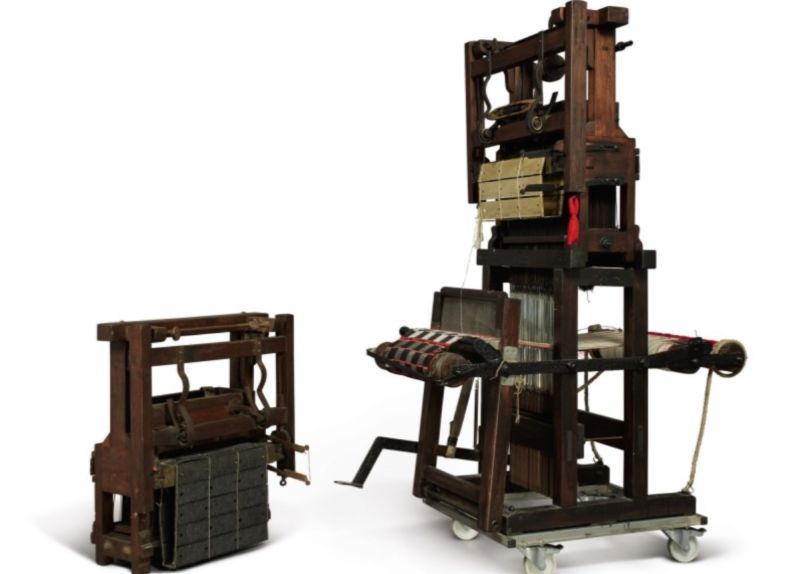This “essential piece of computing history” just sold for $43,750

Enlarge / This Jacquard-driven loom, circa 1850, is considered an early predecessor of the first computers. (credit: Sotheby's)
Charles Babbage is widely recognized as a pioneer of the programable computer due to his ingenious designs for steam-driven calculating machines in the 19th century. But Babbage drew inspiration from a number of earlier inventions, including a device invented in 1804 by French weaver and merchant Joseph Marie Jacquard. The device attached to a weaving loom and used printed punch cards to "program" intricate patterns in the woven fabric. One of these devices, circa 1850, just sold for $43,750 at Sotheby's annual History of Science and Technology auction.
"Technically, the term 'Jacquard loom' is a misnomer," said Cassandra Hatton, a senior specialist with Sotheby's. "There's no such thing as a Jacquard loom-there's a Jacquard mechanism that hooks onto a loom." It's sometimes called a Jacquard-driven loom for that reason.
There were a handful of earlier attempts to automate the weaving process, most notably Basile Bouchon's 1725 invention of a loom attachment using a broad strip of punched paper and a row of hooks to manipulate the threads. Jacquard brought his own innovations to the concept.
Read 9 remaining paragraphs | Comments